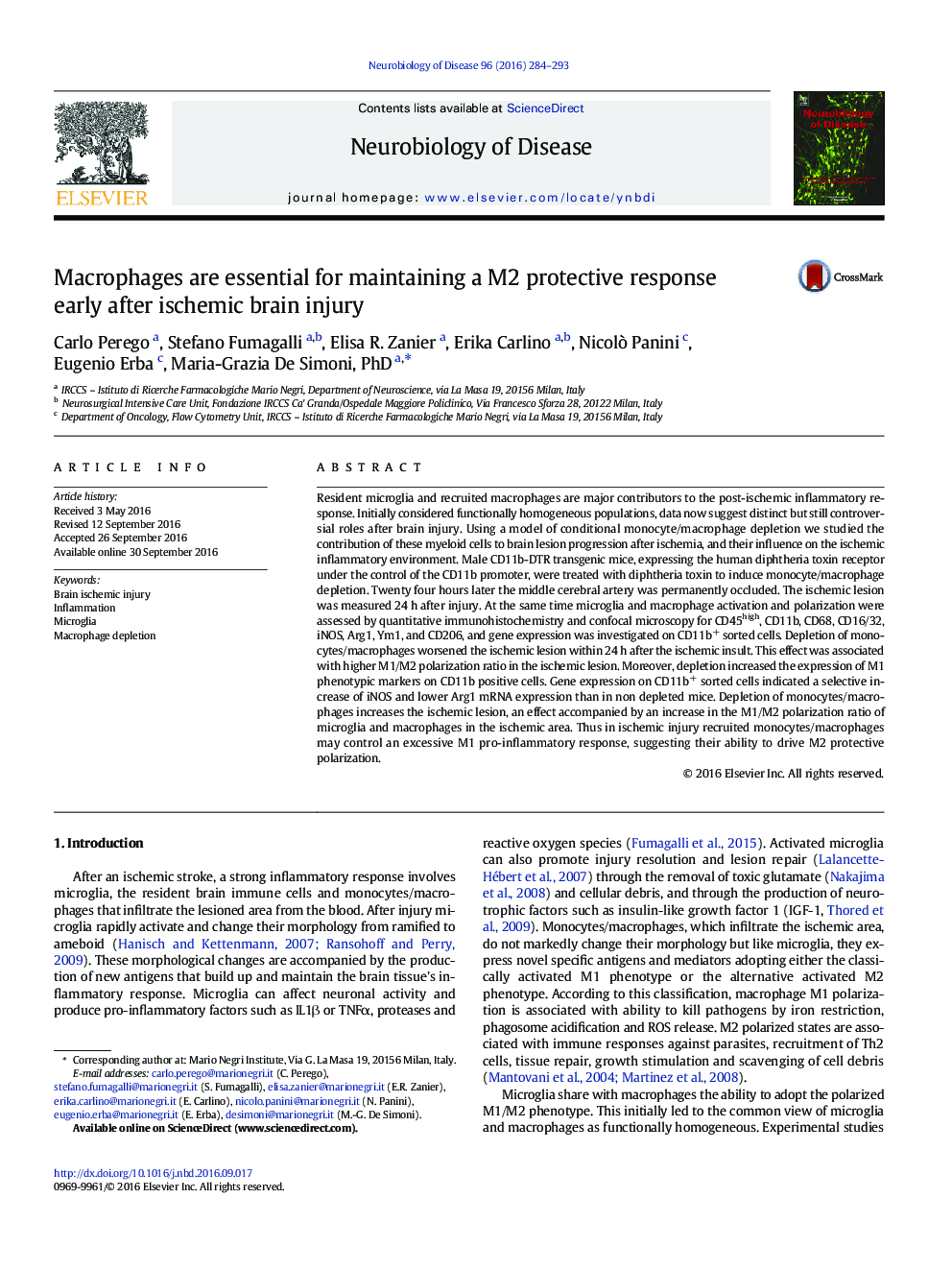| Article ID | Journal | Published Year | Pages | File Type |
|---|---|---|---|---|
| 6021266 | Neurobiology of Disease | 2016 | 10 Pages |
â¢Monocyte/macrophage depletion worsens the ischemic injury.â¢Monocyte/macrophage depletion increases M1/M2 ratio in the ischemic lesion.â¢Monocytes/macrophages may drive M2 protective polarization after ischemia.
Resident microglia and recruited macrophages are major contributors to the post-ischemic inflammatory response. Initially considered functionally homogeneous populations, data now suggest distinct but still controversial roles after brain injury. Using a model of conditional monocyte/macrophage depletion we studied the contribution of these myeloid cells to brain lesion progression after ischemia, and their influence on the ischemic inflammatory environment. Male CD11b-DTR transgenic mice, expressing the human diphtheria toxin receptor under the control of the CD11b promoter, were treated with diphtheria toxin to induce monocyte/macrophage depletion. Twenty four hours later the middle cerebral artery was permanently occluded. The ischemic lesion was measured 24Â h after injury. At the same time microglia and macrophage activation and polarization were assessed by quantitative immunohistochemistry and confocal microscopy for CD45high, CD11b, CD68, CD16/32, iNOS, Arg1, Ym1, and CD206, and gene expression was investigated on CD11b+ sorted cells. Depletion of monocytes/macrophages worsened the ischemic lesion within 24Â h after the ischemic insult. This effect was associated with higher M1/M2 polarization ratio in the ischemic lesion. Moreover, depletion increased the expression of M1 phenotypic markers on CD11b positive cells. Gene expression on CD11b+ sorted cells indicated a selective increase of iNOS and lower Arg1 mRNA expression than in non depleted mice. Depletion of monocytes/macrophages increases the ischemic lesion, an effect accompanied by an increase in the M1/M2 polarization ratio of microglia and macrophages in the ischemic area. Thus in ischemic injury recruited monocytes/macrophages may control an excessive M1 pro-inflammatory response, suggesting their ability to drive M2 protective polarization.
